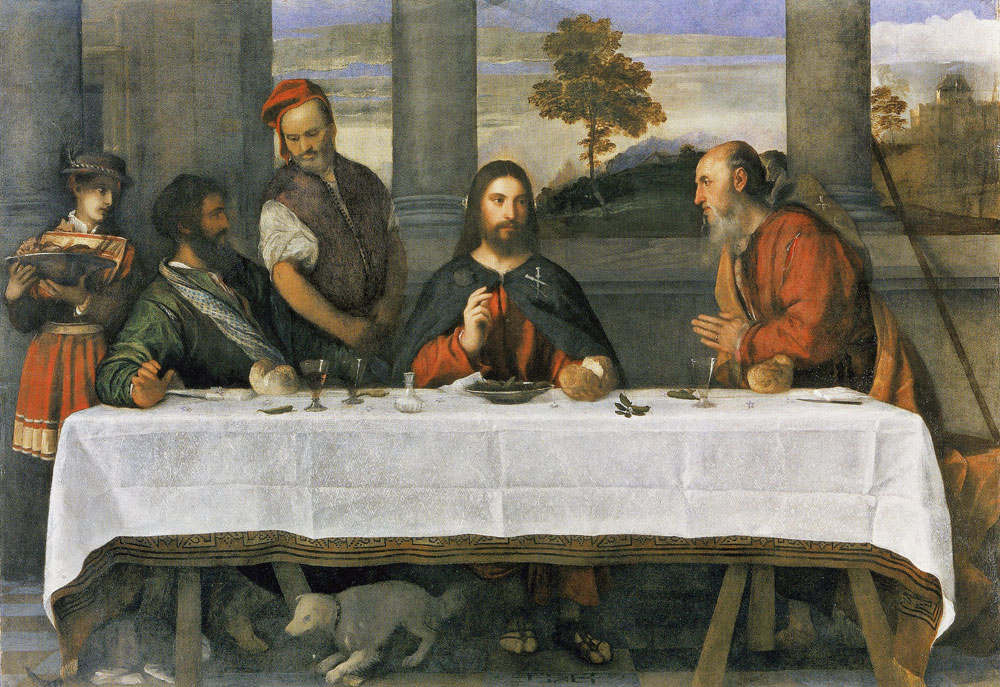
You might consider the table cloth to be of little importance in the story of the Supper at Emmaus, but it dominates this painting. The white weave is strikingly set against the darker tones of evening. The table with its cloth spans the width of the canvas. The format of the long dinner table and, even the type of table, recalls Leonardo’s “Last Supper” in Milan. There are other similarities. The disciple on the left is very like a disciple in Leonardo’s work. The loggia, giving views of a country landscape, is also reminiscent of Leonardo’s fresco. Titian did another version of this painting a few years later. It is in the Louvre. The disciple on the left is the same in both versions, but in the second version, the disciple on the right stands in front of the table, partly obscuring the cloth and the end of the table. In this first version, Titian draws our eyes to the white expanse of the table cloth.
The two disciples had invited this pilgrim to join them for their evening meal. The tree on the hill behind Jesus recalls Titian’s “Noli Me Tangere” (1514, National Gallery, London) ) in which Mary Magdalene encountered the Risen Christ, early in the morning of that same day. Despite the fine linen and the delicate glass ware, their meal is rather meagre. There is bread and wine, which, no doubt, symbolise the Eucharist. The bowl of fruit suggests the Passion. Although, Jesus is their guest, it is he who presides over the table. We see him seated at the centre of the table raising his hand to bless the bread. This is the moment of recognition.
By comparison with the works of other artists, the response of Titian’s disciples is rather muted. We are accustomed to expressions of surprise and even shock when the disciples first recognised Jesus in the breaking of bread. Here there is at most mild surprise. In fact, the disciple on the right seems to be wrapt in devotion. He has joined his hands and he almost kneels in prayer before Jesus.
This painting once hung in the Chapel of the Doge’s Palace in Venice. There are a few flowers strewn on the table cloth and this detail might be significant. As well as the allusions to the Mass, the strewn flowers may allude to the procession at Corpus Christi and to devotion to the Blessed Sacrament, which would become a central part of Venetian parish life as the century progressed. Is the white cloth there to remind us of an altar cloth which has been carefully prepared for Mass? Despite the fading light outside, there is another interior light coming from the left. It shines on the faces of Jesus and the praying disciple, but it captures also the texture and folds of the white cloth. To my eye, the pristine condition of the cloth and the crisp folds left by ironing suggest deep devotion both to the Mass and the Blessed Sacrament.
The Catholic Chaplaincy serves the students and staff of the University of Edinburgh, Edinburgh Napier University and Queen Margaret University.
The Catholic Chaplaincy is also a parish of the Archdiocese of St Andrews and Edinburgh (the Parish of St Albert the Great) and all Catholic students and staff are automatically members of this parish.